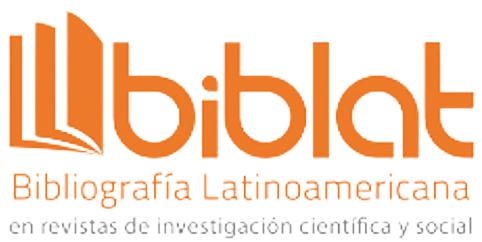Linear Regression application to predict the popularity index in Spotify
Abstract
Currently, streaming music services have become one of the main means of music consumption around the world. Spotify offers music streaming services and covers more than thirty million songs. Every year there is an increase in the production of songs so it is more difficult for a song to establish itself as a hit in the market. The objective of this work was to apply the Linear Regression modeling technique to find a trend of the data set on the popularity index of songs on the Spotify platform, in this way predict a result with new data that enters. A quantitative methodology was applied based on measurable data that were taken as datasets. As a result, a mean square error of 94.79 and a variance of 0.20 were obtained. The conclusion of the work is that the dataset used was not the ideal according to our objective.
Downloads
References
Gómez Herrero, R. (2021). Evolución de la Industria Musical. Siglo XX-Siglo XXI. UVaDOC Principal. https://uvadoc.uva.es/handle/10324/48012 [Accessed: June 22, 2022].
García Pizarro, A. (2021). El auge de la música en streaming. UVaDOC Principal. https://uvadoc.uva.es/handle/10324/51809 [Accessed: June 22, 2022].
D. Smite, N. B. Moe, G. Levinta and M. Floryan, "Spotify Guilds: How to Succeed With Knowledge Sharing in Large-Scale Agile Organizations," in IEEE Software, vol. 36, no. 2, pp. 51-57, March-April 2019, doi: 10.1109/MS.2018.2886178. DOI: https://doi.org/10.1109/MS.2018.2886178
Interiano, M., Kazemi, K., Wang, L., Yang, J., Yu, Z., & Komarova, N. L. (2018). Musical trends and predictability of success in contemporary songs in and out of the top charts. Royal Society Open Science, 5(5), 171274. doi:10.1098/rsos.171274 DOI: https://doi.org/10.1098/rsos.171274
M. M. Braga, "Spotify vs. Apple : a battle of titans", doctoral thesis, Universidade de Catolica Portuguesa, 2021.
M. Lopes Barata y P. Simões Coelho, "Music streaming services: understanding the drivers of customer purchase and intention to recommend", ScienceDirect, Volume 7, Issue 8, agosto de 2021, art. n.º e07783. DOI: https://doi.org/10.1016/j.heliyon.2021.e07783
Golbaz, S., Nabizadeh, R., & Sajadi, H. S. (2019). Comparative study of predicting hospital solid waste generation using multiple linear regression and artificial intelligence. Journal of Environmental Health Science and Engineering, 17(1), 41-51. DOI: https://doi.org/10.1007/s40201-018-00324-z
Sravani, B., & Bala, M. M. (2020, June). Prediction of student performance using linear regression. In 2020 International Conference for Emerging Technology (INCET) (pp. 1-5). IEEE. DOI: https://doi.org/10.1109/INCET49848.2020.9154067
Hernández Oliván, C., & Beltrán Blázquez, J. R. Análisis musical mediante inteligencia artificial.
C. Qin, H. Yang, W. Liu, S. Ding and Y. Geng, "Music Genre Trend Prediction Based on Spatial-Temporal Music Influence and Euclidean Similarity," 2021 36th Youth Academic Annual Conference of Chinese Association of Automation (YAC), 2021, pp. 406-411, doi: 10.1109/YAC53711.2021.9486510. DOI: https://doi.org/10.1109/YAC53711.2021.9486510
López Takeyas, B. (2007). Introducción a la inteligencia artificial. Instituto Tecnológico de Nuevo Laredo. http://itnuevolaredo.edu.mx/takeyas/Articulos/Inteligencia%20Artificial/ARTICULO%20Introduccion%20a%20la%20Inteligencia%20Artificial.pdf
Contributors to Wikimedia projects. (2009, 29 de julio). Data reduction - Wikipedia. Wikipedia, the free encyclopedia. https://en.wikipedia.org/wiki/Data_reduction
Contributors to Wikimedia projects. (2005, 31 de diciembre). Data cleansing - Wikipedia. Wikipedia, the free encyclopedia. https://en.wikipedia.org/wiki/Data_cleansing
Alonso, J. C., & Muñoz, A. (2014). Interpretacion de variables Dummy en modelos log-lin. Cali, Colombia: Departamento de Economía, Universidad Icesi.
Variable ficticia - Definición, qué es y concepto | Economipedia. Economipedia. https://economipedia.com/definiciones/variable-ficticia.html
¿Qué es la regresión lineal? MathWorks - Creadores de MATLAB y Simulink - MATLAB y Simulink - MATLAB & Simulink. https://la.mathworks.com/discovery/linear-regression.html (accedido el 13 de agosto de 2022).
M. R. Gupta, E. K. Garcia and E. Chin, "Adaptive Local Linear Regression With Application to Printer Color Management," in IEEE Transactions on Image Processing, vol. 17, no. 6, pp. 936-945, June 2008, doi: 10.1109/TIP.2008.922429. DOI: https://doi.org/10.1109/TIP.2008.922429
Colaboradores de los proyectos Wikimedia. (2002, 13 de febrero). Python - Wikipedia, la enciclopedia libre. Wikipedia, la enciclopedia libre. https://es.wikipedia.org/wiki/Python
¿Qué es Google Colaboratory? (s. f.). 330ohms. https://blog.330ohms.com/2021/08/10/que-es-google-colaboratory/
Colaboradores de los proyectos Wikimedia. (2012, 4 de febrero). NumPy - Wikipedia, la enciclopedia libre. Wikipedia, la enciclopedia libre. https://es.wikipedia.org/wiki/NumPy
Introducción a la Librería Pandas de Python. (s. f.). Aprende IA. https://aprendeia.com/introduccion-a-la-libreria-pandas-de-python-parte-1/
Matplotlib: Funciones principales. Cursos de Programación de 0 a Experto © Garantizados. https://unipython.com/matplotlib-funciones-principales/
Espacio de recursos de ciencia de datos. (s. f.). Espai de recursos de ciencia de dades. http://datascience.recursos.uoc.edu/es/preprocesamiento-de-datos-con-sklearn/
Seaborn presentación. (s. f.). Interactive Chaos. https://interactivechaos.com/es/manual/tutorial-de-seaborn/presentacion
Gao, J. (2012). Data preprocessing.
- Conceptualization
- Data curation
- Formal Analysis
- Investigation
- Methodology
- Software
- Validation
- Visualization
- Writing - original draft
- Writing - review & editing
- Conceptualization
- Data curation
- Formal Analysis
- Investigation
- Methodology
- Software
- Validation
- Visualization
- Writing - original draft
- Writing - review & editing
- Conceptualization
- Data curation
- Formal Analysis
- Investigation
- Methodology
- Software
- Validation
- Visualization
- Writing - original draft
- Writing - review & editing
- Conceptualization
- Data curation
- Formal Analysis
- Investigation
- Methodology
- Software
- Validation
- Visualization
- Writing - original draft
- Writing - review & editing
Copyright (c) 2023 Innovation and Software

This work is licensed under a Creative Commons Attribution 4.0 International License.
The authors exclusively grant the right to publish their article to the Innovation and Software Journal, which may formally edit or modify the approved text to comply with their own editorial standards and with universal grammatical standards, prior to publication; Likewise, our journal may translate the approved manuscripts into as many languages as it deems necessary and disseminates them in several countries, always giving public recognition to the author or authors of the research.
























